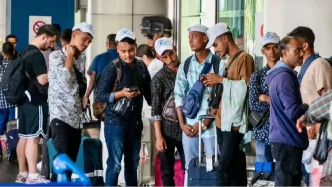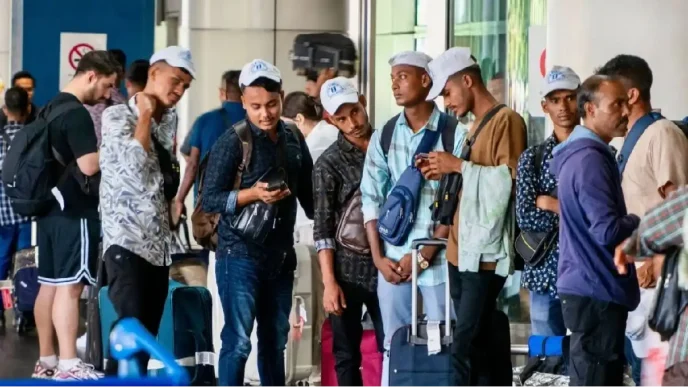Sometimes, it takes an outsider’s curiosity to remind us of the beauty in our own backyard. For many residents of Kuala Lumpur (KL), the city is a familiar tapestry of bustling streets, towering skyscrapers, and hidden gems. Yet, as a local, it’s easy to overlook the charm of the everyday. When tasked with crafting an itinerary for a visiting friend during Chinese New Year week, I found myself rediscovering KL through fresh eyes, uncovering layers of history, culture, and modernity that I had long taken for granted.
This journey wasn’t just about playing tour guide; it became a personal exploration of a city I thought I knew inside out. From the historic confluence of rivers at Masjid Jamek to the vibrant food stalls of Petaling Street, and the surprising tranquility of Bukit Nanas Forest Reserve, KL revealed itself anew. This is a story not of a tourist’s first impressions, but of a resident falling in love with their home all over again.
One of the first ideas for an itinerary was to trace KL’s history through its architecture—a narrative of a city born from tin mining and shaped by cultural confluence. A logical starting point is Masjid Jamek, often considered the heart of old Kuala Lumpur. Nestled between Petaling Street and Jalan Masjid India, this mosque marks the spot where the Klang and Gombak rivers meet, a muddy confluence that gave the city its name. It’s also where Yap Ah Loy, a pivotal figure in KL’s early development, established his influence in the 19th century.
From there, a short journey leads to the Sultan Abdul Samad Building and Dataran Merdeka, iconic landmarks that echo Malaysia’s colonial past and its path to independence. Further along, in what is now the Kuala Lumpur City Centre near Ampang, the story shifts to modernity—where tin mines once dominated, glass and steel towers now stand as symbols of economic transformation. This architectural journey offers a tangible sense of how KL has evolved while retaining a distinctly Malaysian identity.
Yet, as intriguing as this route is, it risks being niche, appealing mainly to history buffs or those with a penchant for design. It involves a lot of ground to cover, often under the sweltering tropical sun, which might not suit every visitor.
A more universally appealing lens through which to explore KL is its food—a vibrant reflection of the city’s multicultural fabric. The culinary scene here mirrors the diversity of its people, with distinct Malay, Chinese, and Indian influences, alongside delightful hybrids. Think of nyonya laksa, a dish that marries Malay spices with Chinese noodles, or murtabak, an Indian-Muslim creation savoured across communities. A food tour could start in Petaling Street, the heart of Chinatown, with its endless hawker stalls, before venturing to Kampung Baru for traditional Malay fare or Brickfields for South Indian delights.
Food in KL isn’t just sustenance; it’s a cultural dialogue. Each bite tells a story of migration, adaptation, and shared heritage. For a visitor, it’s a feast for the senses, and for a local like me, it’s a reminder of the city’s soul. Planning this itinerary made me realise how much of KL’s culinary landscape I’ve yet to fully explore myself.
Beyond history and food, KL also shines as a modern metropolis where urban life and nature coexist. The city’s skyline, dominated by the Petronas Twin Towers, glimmers in the early morning light, a testament to Malaysia’s rapid development. The public transport system—comprising LRT, MRT, and monorail lines—may have its flaws, but it offers an efficient way to navigate this sprawling city. I was surprised to learn about the MyCity Pass, a RM6 one-day unlimited travel card, which could have saved me countless ringgit over the years had I known about it sooner.
What’s equally striking is how greenery weaves into the concrete jungle. Bukit Nanas Forest Reserve, for instance, sits in the heart of the city, leading up to the KL Tower. Despite living in KL for over half my life, I’ve never hiked this trail—a fact that dawned on me with a mix of embarrassment and excitement as I planned to explore it with my guest later this week. These pockets of nature offer a quiet contrast to the city’s frenetic pace, reminding us of the balance KL strives to maintain.
Perhaps the most humbling part of this experience was uncovering places I’d overlooked despite their proximity. Take MinNature Malaysia in Bukit Bintang, a gallery of miniature replicas of iconic Malaysian buildings and dioramas of local foods. I’d walked past it countless times, even spoken to one of its co-founders, yet never stepped inside until this exercise prompted me to. The intricate details were mesmerising, offering a unique perspective on the country’s cultural and architectural heritage.
Then there’s the concept of “lepak,” a quintessentially Malaysian term for lounging or hanging out with no particular agenda. Explaining this to my friend made me appreciate how KL’s casual, laid-back vibe is as much a part of its identity as its landmarks. It’s not about filling every moment with activity; sometimes, it’s about simply being present in the city’s rhythm.
Crafting this itinerary wasn’t just about showing off Kuala Lumpur to a visitor—it became a journey of self-discovery. I’ve always been eager to travel abroad, seeking novelty in far-off places, yet I’ve barely scratched the surface of my own city. There’s a certain irony in needing someone else’s perspective to appreciate what’s right in front of me.
KL is not a city of polished perfection; it’s a chaotic, vibrant mosaic of old and new, tradition and innovation. My itineraries lacked the slick organisation of a professional tour, but perhaps that’s fitting. Kuala Lumpur doesn’t conform to a neat checklist—it surprises, intrigues, and occasionally frustrates, but it always leaves an impression.
I hope the experience captures the essence of KL’s multifaceted charm. For me, it’s a reminder to pause and look closer at the familiar. Sometimes, it truly takes seeing our home through someone else’s eyes to appreciate its beauty.














